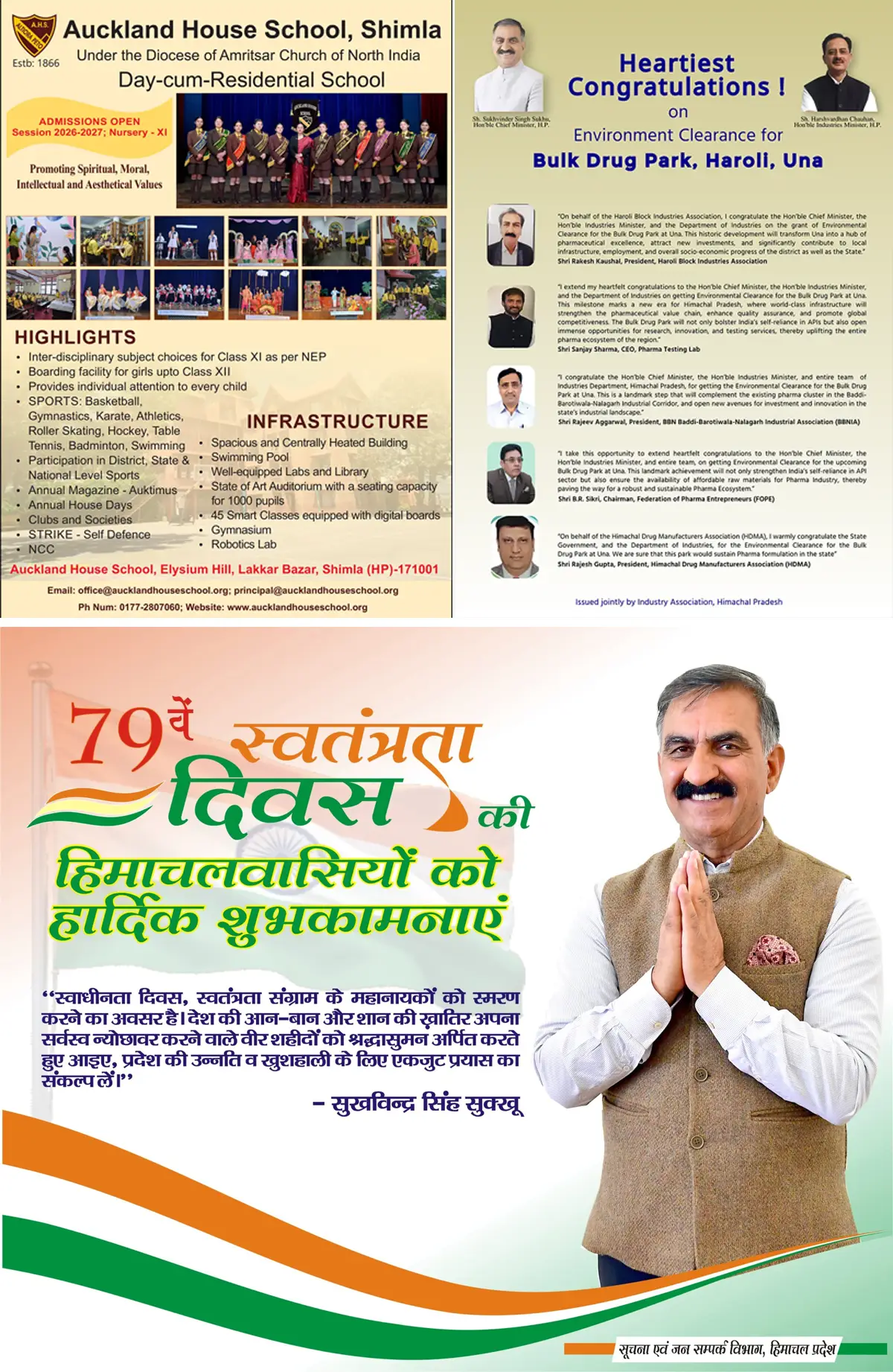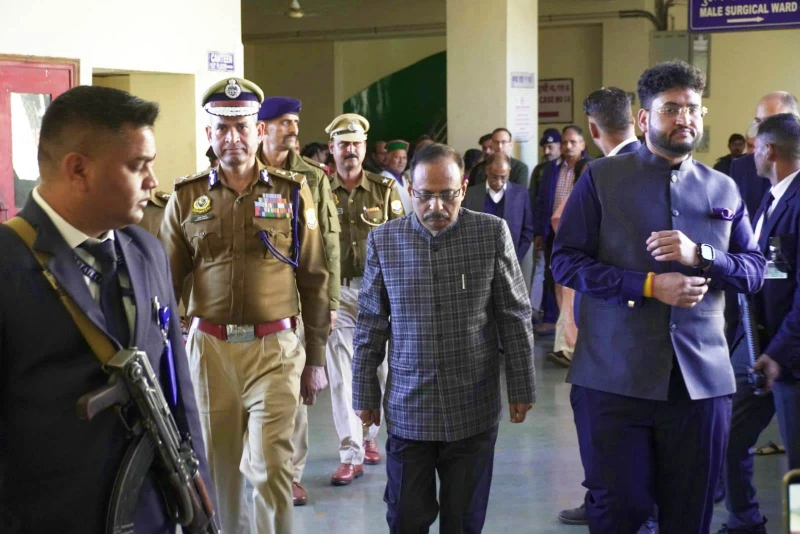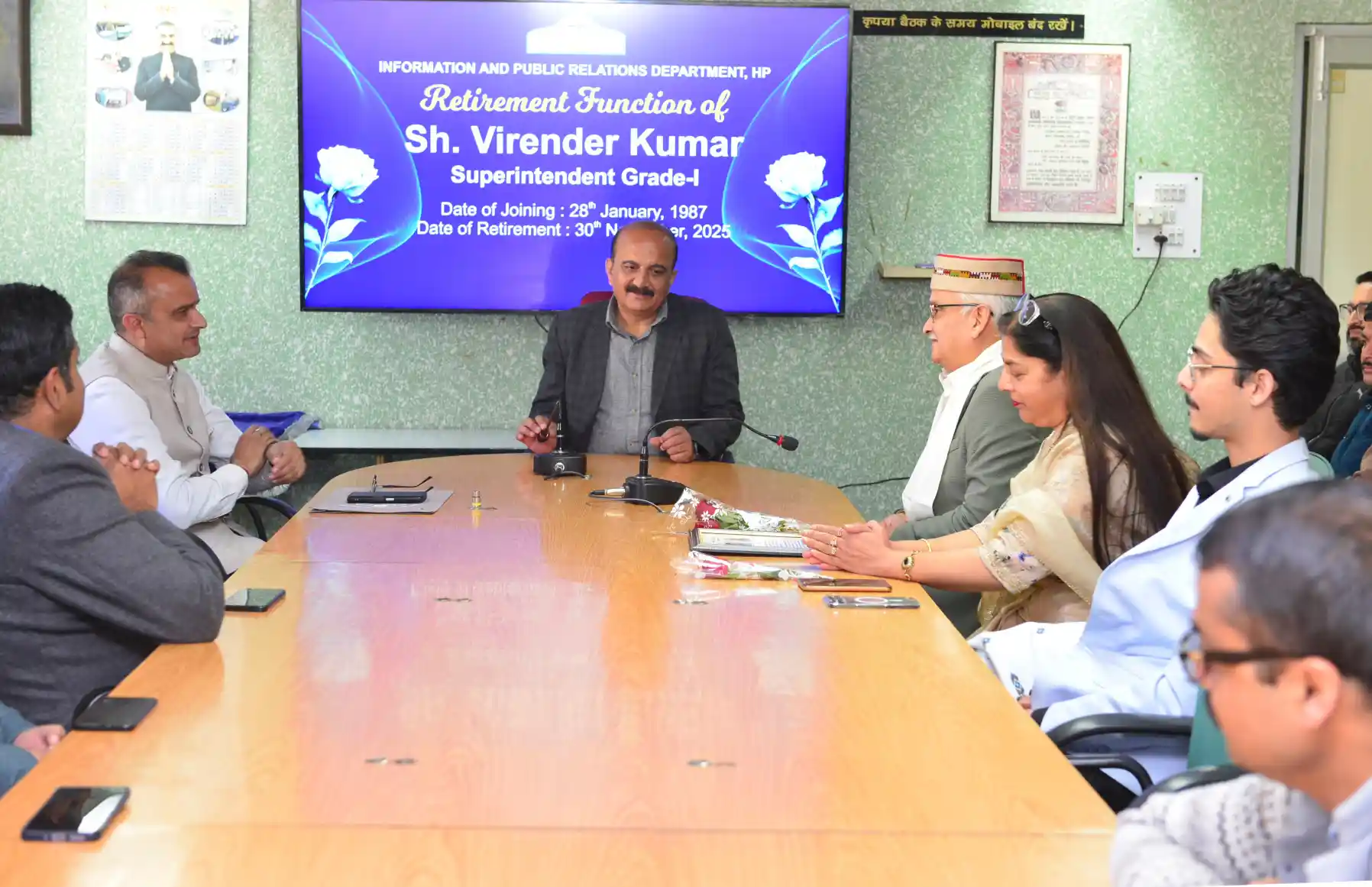A Trip Down History Lane To Statehood Of Himachal Pradesh
9 min read
Assist. Prof. Pyar Singh Thakur
The present Himachal Pradesh is the outcome of the struggle of the freedom fighters, earlier great leaders and our forefathers’ inimitable scramble of Himachal Pradesh who shaped this province of Himalayas to united shape of constituted hill States and hill Punjab States, and regained its past, culture, language, social life set up. The struggle for subsume the thirty princely States ruled by Thakurs, Ranas in the hills to united Himachal Pradesh under Union of India was not easy to grapple them to leave their kingdoms. This Himalayan land has myriads of tales, struggles since its ancient time and different civilizations used to usher here in the lap of the Himalayas. In this pocket, the history of Himachal Pradesh is as old as old mountains, rivers, forests, hills on the land are in the Himalayas. The history of Himachal Pradesh is as ancient as the history of human existence itself. Evidence of the veracity of this fact comes from the materials found in excavations done in different parts of Himachal Pradesh. In ancient times, the original inhabitants of this region were known as Das, Dasyu and Nishad. The literal meaning of Himachal Pradesh is “Province of Snowy Mountains”. Himachal Pradesh is also called ‘Land of gods and sages’ and it is known for its pulchritudinous in its geographical symmetry, greenery, rivers, flora-fauna, soothing climate, snowfall, mountains, apple growing State, different crops, copious fruit crops, rich culture, medicinal vegetation, charming valleys, attraction for tourists, squeaky clean people, and also known as ‘Land of Gallantry’/ ‘Veer Bhumi’/The influence of Aryans in this region is older than the Rigveda. The sage Mandukya composed the Upanishads here and Sage Vyasa, the one who classified the Vedas and was a legendary sage portrayed in the Hindu epic Mahabharata, and regarded by Hindu-tradition as the compiler of Mahabharata.
History reveals that this region was ruled by Harshvardhana in the seventh century and Muktaditya in the eighth century. Raja Kehar Singh ruled here in the 15th century. After the Anglo-Gorkha War, this British hill region came under the hands of the colonial government. In the eighteenth century, the Gorkhas attacked Bushehar here. When the British came here, they defeated the Gorkh people and annexed the princely States of some kings to their empire. In the nineteenth century, Ranjit Singh annexed many parts of this region to his kingdom. Until 1857, it was part of the State of Punjab (except the Siba State of Punjab Hills) under the rule of Maharaja Ranjit Singh. After that this region became under the British Government and the rule of this region was run by Raja Mahendra Singh, his son Shamsher Singh and grandson Raghunath Singh. The summer capital was Shimla during the British period.
The people of Himalayan hill region also participated in the freedom struggle of India and hill States of the Himalayan region. The Mandi Conspiracy was carried out in 1914-15 under the influence of the Gadar Party. Meetings were held in Mandi and Suket States in December 1914 and January 1915 and it was decided to kill the Superintendent and Wazir of Mandi and Suket States, to loot the treasury, blow to up the bridge over Beas River. However, conspirators/revolutionaries were caught and sentenced to long terms in prison. The Pajhota Agitation in which the people of a part of Sirmaur State revolted is regarded as an extension of the Quit India Movement of 1942. The major freedom fighter of the Himalayan region during this period included Dr. Yashwant Singh Parmar, Padam Dev, Shivanand Ramaul, Purnanand, Satya Dev, Sada Ram Chandel, Daulat Ram, Sobha Ram, Thakur Hazara Singh, Pahari Gandhi Baba Kanshi Ram, Durga Chand Thakur and many more freedom fighters.
By 1945 AD, Praja Mandals had been formed across the State. In 1946 AD, all Praja Mandals were included in Himalayan Hill States Regional Council (HHSRC) and headquarter was established in Mandi, appointed Swami Purnanand of Mandi as President, Padam Dev as Secretary and Shiv Nand Ramaul (Sirmaur) as Joint Secretary. In 1946, elections were held in Nahan of HHSRC, in which Yashwant Singh Parmar was elected President. In January 1947 AD, Shimla Hill States Union was established under the chairmanship of Raja Durga Chand Thakur (Baghat). Praja Mandal launched agitations against the British yoke in the hill regions under the direct British rule. In other princely States of the hill regions were launched for social and political reforms. However these were directed more against the princes than against the British and as such were mere extensions of the freedom movement of India.
After the era of independence, Himalayan region, the Himachal also changed its course. Its conference was held in Solan in January, 1948 AD. The announcement of the creation of Himachal Pradesh was made in this conference. On the other hand, the Praja Mandal leaders had a conference in Shimla, in which Yashwant Singh Parmar emphasized that the creation of Himachal Pradesh is possible only when the political power is handed over to the people of the State. The “Himalayan Prant Provisional Government” (HPPG) was established under the chairmanship of shivanand Ramaul on 26 January 1948, headquartered at Shimla. Sadanand Chandel from Bilaspur, Pt. Padam Dev from Rampur Bushair, Mukand Lal from Suket/Sundernager were the members of HPPG. This Provisional Government had the sanction of “All India States People’s Conference” (AISPC) also. The leaders of this provisional Government met at Sunni on February 8, 1948 in two prongs and resolved to launch a movement to secure the merger of Himalayan States with the Union of India. The leaders of this Himalayan Prant Provisional Government selected State Suket as the first target to merger with Union of India as the climate and circumstances were very favorable there for take action under “Civil Disobedience Movement” (CDM) in Suket, (Suket now in Mandi district) popularly known as “Suket Satyagraha Movement” (SSM) was launched under the patronage of “Praja Mandal Party” (PMP) in February, 1948, and which finally led to the merger of Suket State with the Union of India. The same movement was launched against other princely States’ rulers to merger with Union of India. The history of Himachal Pradesh is full with such movements against the rulers of this Himalayan land to merger with Union of India which cannot be scripted in a single article. On March 2, 1948, the conference of the kings of Shimla Hill State was held in Delhi. These kings signed an agreement on 8 March, 1948 to rope in Himachal as merged with Union of India. 15 April 1948 AD, the State of Himachal Pradesh was created. Himachal Pradesh came into existence as “Chief Commissioner’s State” on 15th April 1948. At that time, the whole of the State was divided into four districts and Punjab Hill States was named as Patiala and East Punjab State. In 1948 AD, Nalagarh princely State of Solan was included. In April 1948, this state was made a Union Territory (UT) by merging about 30 princely States spread over27, 000 square km of this area. Every year, 15th April is celebrated as “Himachal Day”/”Himachal Divas”.
Himachal Pradesh became “C” Category State on 26 January 1950 with the reorganization of the State in 1950, with the coming into force of the Indian Constitution. Under the reorganization of the State in 1950 AD, the boundaries of the State were reorganized. By giving the status of sub-tehsil to Kotkhai, some areas of Khaneti, Darkoti, Kumarsain sub-tehsil and some areas of Balsan were included in Kotkhai. Kotgarh was merged with Kumarsain sub-tehsil. Two villages of Uttar Pradesh (now Uttarakhand State) Sangos and Bhandar were included in Jubbal Tehsil. Seven villages from Nalagarh in Punjab were included in Solan Tehsil. In return, Kusumpti, Bharari, Sanjauli, Wakna, Bhari, Kato, Rampur Keonthal near Shimla roped in Shimla area/Mahasu District headquarter at Kasumpti, and with this the Chharbra area (in Mashobra) of “Patiala & East Punjab States” (PEPSU) was included in Kasumpti Tehsil as there were eight princely provinces of western India that were considered to be brought together to form Patiala & East Punjab States Union of PEPSU. These princely territories were Patiala, Jind, Nabha, Faridkot, Kapurthala, Kalsia, Malerkotla and Nalagarh, and Patiala was the capital of the union, and these eight princely States were combined together to form a single State on 15 of July in the year 1948 till 1956. The majority of its masses were Punjabi speaking.
Bilaspur princely State was kept separate from the State in 1948 AD. In those days, due to the work of Bhakra Dam project in this area, it was kept separate in the State. After ‘The Himachal Pradesh and Bilaspur (New State) Act, 1954” was passed by an Act of Parliament of India Bilaspur State was dissolved on 1st July 1954 and incorporated into the State of Himachal Pradesh as a Bilaspur District. On July 1, 1954 AD, the State of Kahlur was included in the State and it was named as Bilaspur. At that time two tehsils namely Bilaspur and Ghumarwin were formed. It became the fifth district of the State.
When Bilaspur a “C” class princely State was merged with Himachal Pradesh in 1954, its area increased to 28,241 sq km and Himachal Pradesh became a Union Territory on 1 July 1956. Himachal Pradesh State was another Part-C State under a Lt. Governor. Initially, it had a thirty six member Legislative Assembly and the first elections to the Legislative Assembly had been held in 1952. In 1954, when Bilaspur was merged with Himachal Pradesh, the strength of its Legislative Assembly was raised to forty one. Part-C States were called ‘Commissioners State. On 1 November 1966, Kangra and other hilly areas of Punjab were merged with Himachal Pradesh but its form remained as a union territory.
On May 1 1960, Kinnaur was created as the sixth district. In this district, Chini Tehsil of Mahasu district and 14 villages in Rampur Tehsil were included. Its three Tehsils were made Kalpa, Nichar and Pooh.
Reorganization of Punjab in the year 1966, Punjab was reorganized and Punjab and Haryana were made two States. The language and hilly regions of Punjab were included in Himachal Pradesh. Areas like Sanjauli, Bharari, Kusumpti, etc. which were earlier in Punjab and Nalagarh, etc. included in Himachal Pradesh. In 1966, it was reorganized by merging the hilly areas of Punjab, and then Himachal Pradesh’s area increased to 55,673 sq km.
Himachal Pradesh was formed on April 15, 1948, by merging 31 small and big princely States in this hilly State. Then Himachal Pradesh became a “C” category State but later its status was reduced to make Himachal Pradesh a Union Territory. The political leaders of Himachal Pradesh under the leadership of the then Chief Minister Dr. Yashwant Singh Parmar waged a peaceful struggle for years to get full Statehood for Himachal Pradesh. A long but non-violent struggle ensued for Himachal Pradesh to get full Statehood, while in other parts of the country any such demand and its fulfillment is accompanied by widespread violence. It was undoubtedly a golden struggle.
On 1st November 1966 AD, Kangra, Kullu, Lahaul-Spiti, Shimla, Nalagarh, Kandhaghat, Una, Dalhousie, etc. areas were merged into Himachal Pradesh and the members of the Legislative Assembly of these areas became the members of Himachal Legislative Assembly. In this way, the entire mountainous region from Chenab-Ravi River to Yamuna River united to become a “Large Himachal/Vishal Himachal”. The dream of this hill people came true. Now the area of Himachal Pradesh has increased to 55,675 square kilometer and population 28, 12,463 in 1966.
On July 31, 1970, the then Prime Minister Mrs. Indira Gandhi announced “Full Statehood to Himachal Pradesh” in the Lok Sabha and then passed the “State of Himachal Pradesh Act, 1971 “ in the Parliament from December 1970.
On January 25, 1971, the then Prime Minister Indira Gandhi visited to Shimla and inaugurated Himachal Pradesh as the 18th full Statehood in front of thousands of Himachal residents amidst heavy snowfall at the Ridge Maidan Shimla and it became the eighteenth State of the Indian Republic. Himachal Pradesh, which got full Statehood, is a symbol of the hopes and aspirations of the hill people. This day was a day of great happiness for the freedom fighters of Himachal Pradesh, activists of Prajamandals and men and women who fought for the attainment of Statehood and Dr. Yashwant Singh Parmar, because from this day the innocent, but brave people here and the dream of the people of Himachal Pradesh had come true and they entrusted their future to the government elected by them. On 1st November 1972, three districts of Kangra district- Kangra, Una and Hamirpur were created. Solan district was carved out of the areas of Mahasu district.
“Himachal Pradesh” was named by Sanskrit scholar Acharya Diwakar Dutt Sharma. Himachal is made up of two words- “Him”+”Anchal”. “Him” means “Snow” and “Anchal” means “Mountain”.
Himachal Pradesh is a State located in north-western India. It covers an area of more than 21,629 (56019km) and is bounded by Jammu & Kashmir in the north, Punjab in the west and south-west, Haryana and Uttarakhand in the south-east and Tibet in the east. It is one of the smaller States of India, a hill State. Its capital is Shimla.
Himachal Pradesh according to the 2011 census of India, the total population of Himachal Pradesh is 68, 64,602. Of these, the population of males is 34, 81,873 and that of females is 33, 82,729. Himachal Pradesh has a sex ratio of 972/1000 and a literacy rate of 82.8% as per 2011 census data.





